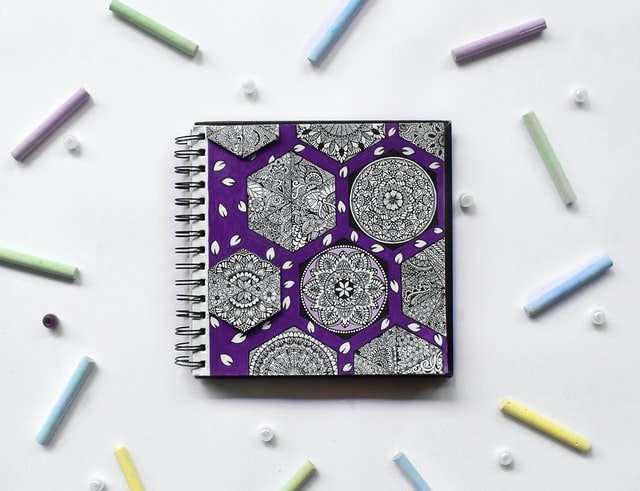Art nouveau (French for “new art”) is a style of art, architecture and applied art—especially the decorative arts—that was most popular between 1890 and 1910.
The style is characterized by flowing, curvilinear designs, often of floral nature. It was inspired by natural forms and structures, not only in flowers but also in curved lines interpreted as ‘whiplash’ movements. The style is typified by an organic, almost biomorphic treatment of plant forms.
Art Nouveau sought to harmonize the functions of art with the activities of life. The structure was simple enough to allow for great variation of form and decoration, yet it had a clear enough system to have stylistic unity.
Art Nouveau is a style of art and architecture that began in the late 19th century. It was a rebellion against the rigid styles of the past decades, and it brought a sense of movement and nature into all forms of art. The Art Nouveau period spanned from roughly 1890 to 1910, but its influence can still be seen today.
Art Nouveau represents the connection between art and nature; it is characterized by curving lines, stylized plants, and flowers, and an almost hypnotic color palette. It is also known for its attention to detail—the careful curving of every branch, petal or leaf.
Art nouveau artists were inspired by natural forms in everything they did. When they designed furniture or clothing patterned after leaves or other plant life, they used real plants as models for their designs. Some even used photographs of plants to create intricate patterns with colored glass or ceramic tiles.
Art nouveau was not just about art; it spread to other areas of daily life as well. Buildings and houses were created in this style, as were jewelry, lamps, vases and decorative objects like boxes. In fact, art nouveau became an international style that spread from Europe to areas around the globe
Art nouveau was a popular artistic movement that began in the 1890s and lasted until about 1910. Art nouveau is French for “new art”. It was a reaction against the realism of impressionism. Art nouveau artists incorporated natural shapes into their work, such as plants and flowers.
Art Nouveau architecture is characterized by flowing lines and plantlike shapes. A common feature in art noeugo architecture is curved lines to make the building seem light. This style of architecture was most popular from 1900-1915. The first important example of art nouveau architecture was Hector Guimard’s Castel Béranger located in Paris, France.
Art nouveau is also recognized for its jewelry, paintings, posters, furniture and other decorative arts. The style flourished between 1895 and 1905. During this time Paris became the world center for art nouveau design. Fashionable people wore clothing made from art nouveau designs that featured flowing lines and elegantly shaped organic motifs._
Art Nouveau was a trend in art and design which originated in Europe, most notably France and Belgium during the 1890s. Art Nouveau was a reaction to the Industrial Age and the idea of technology and machinery taking over from traditional craft-based forms of art.
Art Nouveau artists rebelled against this notion by using nature as their inspiration; instead of mechanical precision, they used organic forms made from natural materials. They represented flowers, plants, insects and animals without scientific accuracy or reproductions but with a sense of freedom, lightness and movement.
Trellises, leaf patterns and floral arrangements were common motifs which appeared on posters, jewellery, fabrics, wallpapers and architectural designs.
Art Nouveau is a style of art, architecture and design that was most popular during the late 19th and early 20th centuries. Art Nouveau was conceived by a group of French artists in the mid-1880s, who were looking to break free from the artistic traditions that had come before them. The name “Art Nouveau” itself translates to “new art” in English, and the style was meant to be a break with the old artistic traditions of the past.
Art Nouveau is an architectural style best known for its use of natural objects or people as the basis for many of its designs. Commonly you will see works of Art Nouveau art include images of flowers and leaves, which were often used to cover entire buildings. The use of such organic forms as decorative elements was very much in contrast to what had been done in previous architectural styles such as Baroque or Rococo.
Art Nouveau was not just an architectural style, but also a decorative art form. Many works are characterized by flowing lines, which are created through a process known as “filigree.” This term describes a process where metal is twisted into intricate shapes on surfaces like woodwork and furniture. This intricate metalwork is one of the hall
Art Nouveau: A Guide To The Style is a historical look at the art movement, which originated in the late nineteenth century.
Art Nouveau, which means new art, was a reaction to the over-ornate styles of the late 1800s, such as Rococo and Victorian. Art Nouveau sought to bring back clean lines and natural beauty to architecture and design.
The style became popular throughout Europe, with major centers in France, Belgium, England and Germany. The main center of Art Nouveau was Paris.
Art Nouveau flourished from about 1890 until World War I. After the war, modernism became more popular worldwide and Art Nouveau began to lose its appeal. It fell out of fashion after World War I but has enjoyed a modest comeback since the 1960s.
Art Nouveau was a new style of art and architecture that was popular between about 1890 and 1910. It emphasized curving lines, floral patterns, and the use of hand-shaped pieces of art glass.
Art Nouveau means “new art.” The word nouveau is French for “new.” The Art Nouveau style or movement began in France in the late 1800’s. It spread rapidly across Europe and then to the United States around 1900.
The Art Nouveau style developed as a result of technological advances made during and after the Industrial Revolution. The Industrial Revolution began in England during the mid 1700’s and ended in most parts of Europe by about 1850. During this period there were many changes in technology that affected how goods were manufactured, stored, and shipped. The most significant innovations were in transportation–the development of steam power, railroads, steamboats, and later automobiles–and the use of electricity.
Artists were inspired by these new technologies, as well as by natural forms such as flowers, plants, animals and insects. They used these organic forms as decorations on buildings and other products like jewelry, furniture and ceramics.


